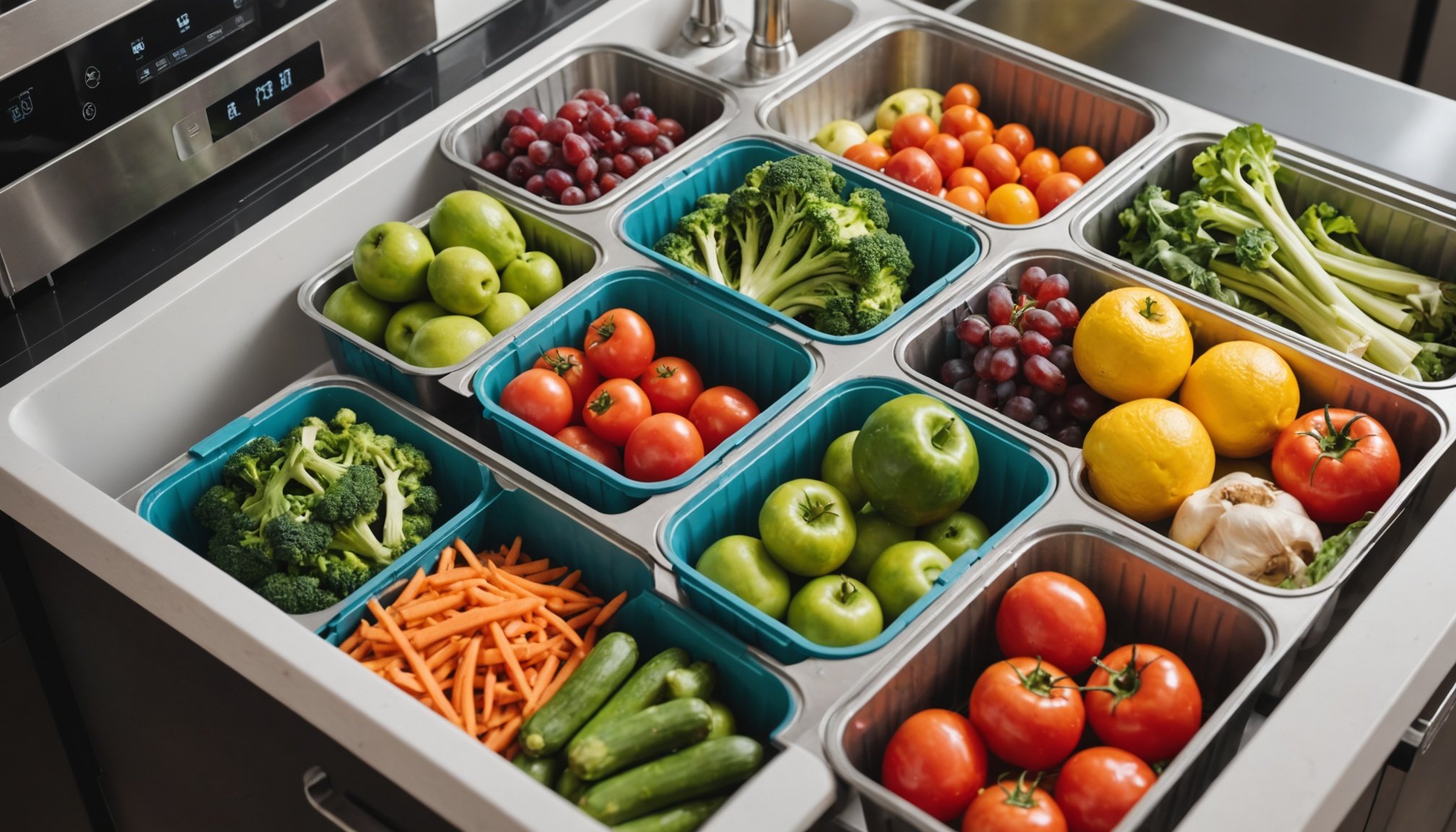Establishing a Waste Sorting System in the Kitchen
Creating an efficient waste sorting system in the kitchen is a crucial step in promoting not only kitchen organization but also encouraging healthy eating habits. A well-organized kitchen makes it easier to focus on meal preparation and making nutritious choices. Here’s a simple guide to set up your sorting system.
Start by designating specific bins for different types of waste: compost, recyclables, and general trash. This clear delineation will enhance kitchen organization and streamline the disposal process, facilitating healthy eating by reducing clutter and distraction while preparing meals.
Also to see : Conquer Your Cuisine: The Ultimate Handbook for Tracking Calories and Managing Portions with Precision in Your Kitchen
Equip yourself with the right materials for an effective waste sorting system. Durable bins with lid options for odour control, biodegradable compost bags, and proper labels for each bin can make a significant difference. Consider the kitchen layout and choose containers that fit comfortably in your space to maintain a seamless flow while cooking.
Incorporating a waste sorting system in your kitchen not only helps in maintaining an orderly workspace but also fosters a habit of reducing waste and utilizing food wisely. This practice can lead to a more mindful and health-conscious approach to cooking, as an organized environment often inspires better habits and the ability to focus on healthy eating choices.
In the same genre : Revamp Your Kitchen: Uncover the Unexpected Perks of a Full-Length Mirror for Boosted Self-Awareness and Smarter Diet Choices
The Connection Between Kitchen Organization and Healthier Eating
The organisation of your kitchen plays a pivotal role in shaping your dietary habits. A clutter-free kitchen encourages healthy cooking habits by making it easier to locate ingredients and equipment, which streamlines meal preparation. When everything has its place, you’re likely to opt for home-cooked meals over unhealthy take-outs, fostering a consistent rhythm of cooking at home.
Studies have shown that a tidy kitchen can have profound psychological impacts on cooking behaviour. When spaces are decluttered, people are more inclined to experiment with new recipes and engage in mindful eating, appreciating each step of the cooking process. Engaging thoughtfully with meal preparation can lead to more nutritious choices as you become more attuned to using fresh ingredients.
Case studies highlight individuals who reorganised their kitchens to support tidy storage and waste sorting. These changes have led to consistently improved eating habits. Participants reported feeling more relaxed and focused during cooking, leading to healthier eating overall. This demonstrates that the influence of a well-organised kitchen extends beyond aesthetics—it has tangible benefits on cooking behaviours and food choices. An organised kitchen doesn’t just make meals easier; it fosters an environment where healthy eating becomes a natural decision.
Meal Prep Ideas to Complement Waste Sorting
Introducing meal prep ideas in tandem with a waste sorting system enhances kitchen efficiency and reduces food waste. Effective meal prep not only simplifies weekly cooking but also aligns with sustainable practices by making use of ingredients wisely.
Quick and Easy Meal Prep Recipes
Consider preparing simple, nutritious recipes in advance. Healthy salads, stir-fries, or grain bowls can be assembled quickly and stored for the week. This approach streamlines your cooking habits, ensuring that you always have healthy meals ready, preventing impulse buys that lead to waste.
Utilizing Leftovers Effectively
Transform leftovers into new dishes instead of discarding them, reducing organic kitchen waste. For example, roasted vegetables can be repurposed into soups or incorporated into omelettes. Such practices ensure that meal prep supports both healthy eating and responsible waste sorting.
Balancing Nutrition through Preparation
To maintain a balanced diet, utilize meal prep strategies to ensure that each dish contains essential nutrients. This can involve pre-chopping vegetables, marinating proteins, or preparing a mix of grains and legumes. Thoughtful planning allows for nutritious meals without excess, which complements the kitchen’s waste reduction efforts.
By integrating meal prep practices with a diligent waste sorting system, kitchens become hubs for sustainable, health-conscious eating.
Examples of Effective Waste Sorting Practices
Implementing a successful waste sorting system starts with understanding best practices from other kitchens and adopting them with a personal touch. Waste reduction, recycling, and promoting sustainability should be at the core of your strategy.
Visual Aids for Waste Sorting
Utilize visual aids like infographics to simplify the process. Before-and-after images of kitchen transformations illustrate the profound impact effective waste sorting can have. Visuals serve as a constant reminder to maintain the system and help families internalize sustainability practices.
Tips for Ongoing Waste Management
- Consistent labelling: Clearly label each bin to avoid confusion and ensure proper disposal of waste.
- Education: Involve every household member in learning about local recycling guidelines.
- Routine evaluation: Regularly assess your kitchen’s waste production to identify further opportunities for waste reduction.
By adopting these strategies, kitchens can become more sustainable spaces, reducing their environmental footprint over time. Successful waste sorting systems serve as a testament to the value of organized kitchens in bolstering sustainable practices while encouraging environmentally mindful behaviors.

